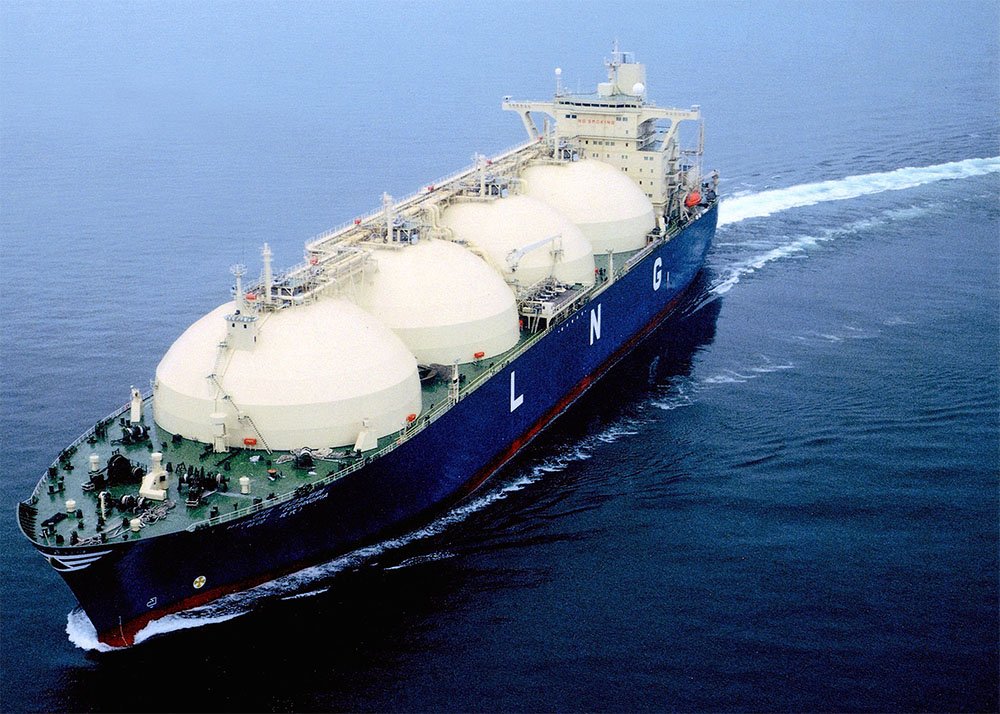
Continued dismal performance of power and energy sector in advancing imported coal based large power plants and political indecision of mining own coal proven reserve has forced government going for more and more liquid fuel based rental power plants. Failure in expediting exploration of petroleum resources also made imported LNG the best possible transition fuel option. Bangladesh has extensive national gas grid. GTCL is undertaking massive expansion for evacuating RLNG. Several FSRUs and few land based terminals are in the program. Plans have been launched for small scale LNG import using terminals of KAFCO and CUFL. Feasibility is also being done utilizing Sangu offshore facilities. How many of these initiatives would bear fruits is any body’s guess given the failures of importing any LNG since 2010.
LNG import contract has been concluded with Qatar. Talks are going on with Oman, Indonesia, Switzerland and other countries for LNG import. LNG is over supplied in world market now and may remain so for few years. A careful mix of long term and spot price based LNG import may be the best option in the prevailing situation for fuel supply as fordable economic price. The main requirement now is sustainable supply of primary fuel. If that can be ensured fuel price adjustment may not create huge impacts on end users. Of course the future use of gas must be more efficient and losses must be brought down to absolute zero. Wherever possible use of natural gas must be replaced with alternate fuel.
LNG Bunker
But the real concern in bureaucracy dominated Petrobangla and EMRD is unusual haste in the expansion gas transmission infrastructure. This write-up will objectively assess the present state of GTCL projects and reasonable targets of completion. Few necessary and some unnecessary expensive gas transmission pipelines have been constructed in haste over the last few years burdening GTCL. The very expensive Bibiyana-Dhanua 36-inch diameter pipeline built using the indemnity act of quick power generation for line pipe procurement is the least utility gas transmission infrastructure now. It has not yet or never in the lifetime would have design capacity gas flowing. The Ashuganj-Bakhrabad gas transmission loop line is running dry now with virtually no gas flowing. These pipelines were constructed by local pipeline contractors and the quality was mostly compromised during construction. Huge investment in the expansion of gas transmission system from Nolka-Ishwardi-Bheramara-Kushtia-Jessore-Khulna built over several years could not supply any gas for domestic, commercial and industrial consumers yet.
Pipeline Infrastructure for Transporting RLNG
GTCL has completed construction of 90 KM long 30” Inches diameter Maheskhali-Anwra gas transmission pipeline construction. Some works of Anowra City Gate Station and a spur line connecting CGS to Chittagong City Ring Main is still outstanding. There are allegations about quality of construction especially a section of the pipeline near Maheskhali waterlogged area. This pipeline has a design capacity of 700 MMCFD. The outstanding works of the pipeline may be completed by December 2017 facilitating evacuation of 500 MMCFD RLNG evacuation set to commence from April 2018. The 420 MMCFD design capacity Chittagong City Ring Main can transport about 400 MMCFD now in present condition. We have been advised that provisions would be there for feeding KAFCO, CUFL and power plants in Shikalbaha directly from Anowara CGS.
Another 90km long 42-inch diameter gas transmission loop line from Maheshkhali-Anwara has been taken up for speedy construction. The line pipes and materials have not arrived yet. Construction contractors have not also been engaged. Right of Way (ROW) has not been acquired. Still the plan is there for completing construction by December 2018. Pending construction of this pipeline there is no possibility of evacuating any RLNG from Summit owned FSRU targeted to be in place by December 2018. GTCL is also implementing another very important 42-inch 27km Anwara-Faujdarhat gas transmission pipeline which includes a very critical 42-inch HDD river crossing of Karnaphuli river paralleling Karnaphuli river tunnel under construction. Here also the line pipes and materials have not arrived at site and ROW acquisition has not been completed. Five construction contractors would be engaged for this small length pipeline of which only a little known Indian contractor has so far been engaged for a very difficult Karnaphuli HDD crossing. Fingers crossed much of the success of completing this pipeline in the ensuing dry season from December to March would largely depend on successfully completing Karnaphuli HDD crossing. One must not forget that GTCL took over 4 years in completing HDD crossing of Padma River connecting Ishwardi to Bheramara. Several vessels were sunk in Karnaphuli river during 1971 Liberation War.
There is possibility of some wreckage being left over. GTCL must be extremely careful in approving the design of the design. There has been no 42-inch pipeline constructed yet in Bangladesh. The doctrine behind engaging 4 contractors for a smaller length pipeline is not understood. Moreover, one leading pipeline contractor Pipeline Engineers and Associates Limited (PEAL) has been found the lowest bidder for all four sections. Some very critical new equipment like Internal and external camps would be necessary. Even new set of X-Ray crawlers and pigs would be essential. Which contractor would import all these for 6-7km section? Ridiculous unprofessional thought.
GTCL has also taken up for construction Faujdarhat-Feni-Bakhrabad 36-inch gas transmission pipeline in anticipation of several other FSRUs and some land based LNG import terminals constructed at Maheskhali region. Cart before the horse strategy may hurt GTCL badly if planned import of LNG is not possible for techno economic reasons. GTCL would require further adjustment of wheeling charge as consequence of huge investment in planned transmission system expansion.
FSRUs Are Contingency Options
In LNG value chain FSRUs are essentially contingency planning. It can store and re-gasify LNG for 260-280 days a year only. During turbulent time of high monsoon FSRUs would float and anchor in safe areas. What would have to gas security during that time? Some strong advocacy is now there for engaging small scale LNG carriers and utilizing KAFCO and CUFL jetties. Bangladesh failed to import even 1 MMCFD LNG in almost 8 years now since adoption of initiative in 2010. Many term the present idea a wild dream. KAFCO and CUFL utilize the jetty for different purpose. Very few small carriers are available now ready to be committed for Bangladesh in 6 months. For many reasons Small Scale LNG option would not work in near terms in Bangladesh reality. Government is unnecessarily wasting time of RPGCL.
RPGCL with no past proven experience would struggle in importing the required LNG from different sources. The present model of LNG value chain may boomerang upon RPGCL and Petrobangla. Contracts with FSRU owners have been signed with provisions of take or pay.
The present model would better benefit FSRU owners as risks of LNG import from volatile LNG market of price uncertainties (being indexed with crude price) would exclusively be borne by RPGCL. The only signed contract Bangladesh now is with Qatar (concluded on 25 September). Any conflict in the gulf region may make LNG supply uncertain. Bangladesh for reasons unknown not is not seriously harboring the high potential Australian LNG market. We also do not support exclusive reliance on LNG as any interruption of LNG supply chain would create uncertainties in energy security.
There are talks of engaging several suppliers for spot markets purchases from PETRONAS, PERTAMINA, Oman, Switzerland and few other countries and suppliers. But from experience of signing contracts with Qatar it can be judged that from starting of discussions to signing of agreements for LNG supply takes a lot of time and lot to do. RPGCL must have required numbers of qualified and trained technical and managerial personnel for managing LNG supply chain.
Capacity Constraints
RPGCL and Petrobangla have huge capacity constraints in managing LNG supply chain. LNG unlike other petroleum products is a super cooled cryogenic fluid transported in purpose built special vessels. We are aware that RPGCL has very limited experience and expertise. The present model of LNG import and some ridiculously ambitious LNG import initiatives have created extraordinary challenges for RPGCL. LNG is very different to LPG, Crude or other fuel like Coal. Special care and attention must be taken at every stage of LNG supply chain. The bitter sweet experience of India over the years can be a very useful lessons learnt for Bangladesh. RPGCL needs extensive training for capacity building for its technical and managerial personnel. We must not expect someone reaching Mount Everest riding on wheel chair
LNG Injection Requiring Price Adjustment
Global market is currently over supplied with LNG. LNG is the transition fuel of choice in different giant LNG importers like Japan, Korea, Taiwan and India. The crude oil indexed LNG price may shoot up any time as consequence of any global event of political disorder. The present weighted average price of gas in Bangladesh is about $3.1/1000 MCF. EMRD and Petrobangla has recently given some indications how LNG injection to gas system would impact on gas price. Off course BERC would have to arrange for public hearing for further adjusting gas price.
Gas price would definitely need phased adjustment as more and more LNG is injected over the next 3-5 years. But without ensuring sustained supply of gas to end users Petrobangla would invite disputes as FSRUs would not ensure sustained supply. Own gas production would also progressively diminish over time.
KGDCL has already sent letter to the largest consortium of foreign investor KAFCO for probable gas price increase. KGDCL and Petrobangla are already in default for meeting the minimum thresh hold limit of gas supply to KAFCO as per contract. The contract has specific provisions under which gas price would be guided. The letter from KGDCL notifying gas price adjustment appears to have irked KAFCO. Any dispute created as consequence may give wrong signal to foreign investment in Bangladesh. Wonder how KGDCL can send a letter to a major gas user for price increase without BERC determining the price and government approving? There is a provision in the gas supply contract with KAFCO for guiding gas price adjustment.Hope this does not enter dispute and litigation.
Khondkar Abdus Saleque;
NRB, Energy Professional



